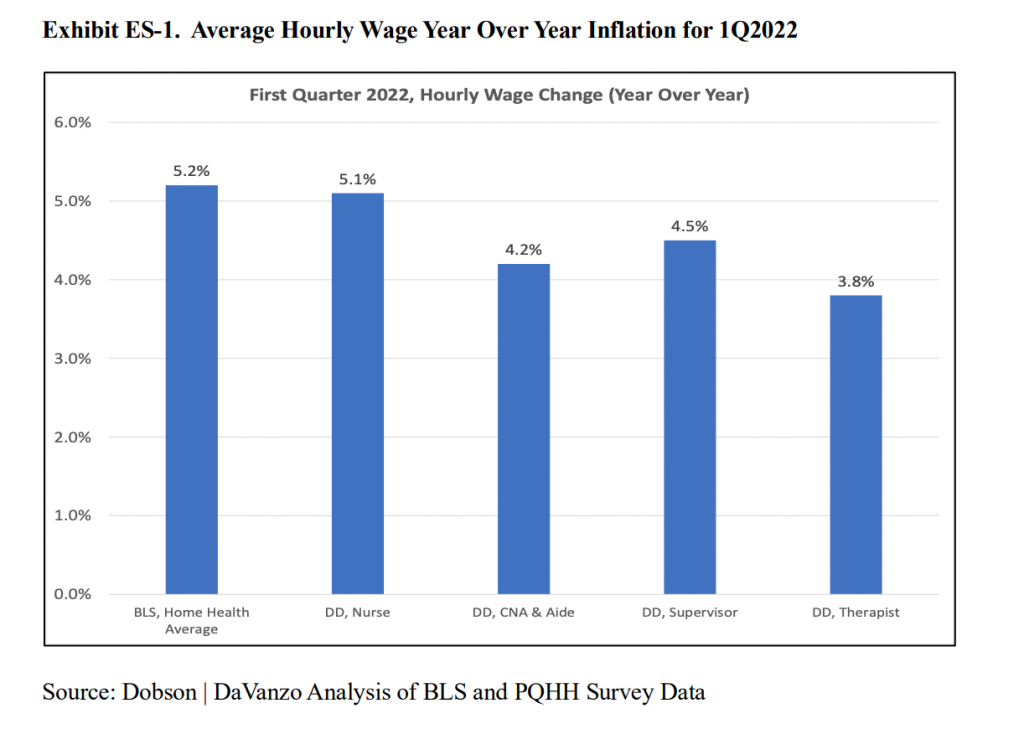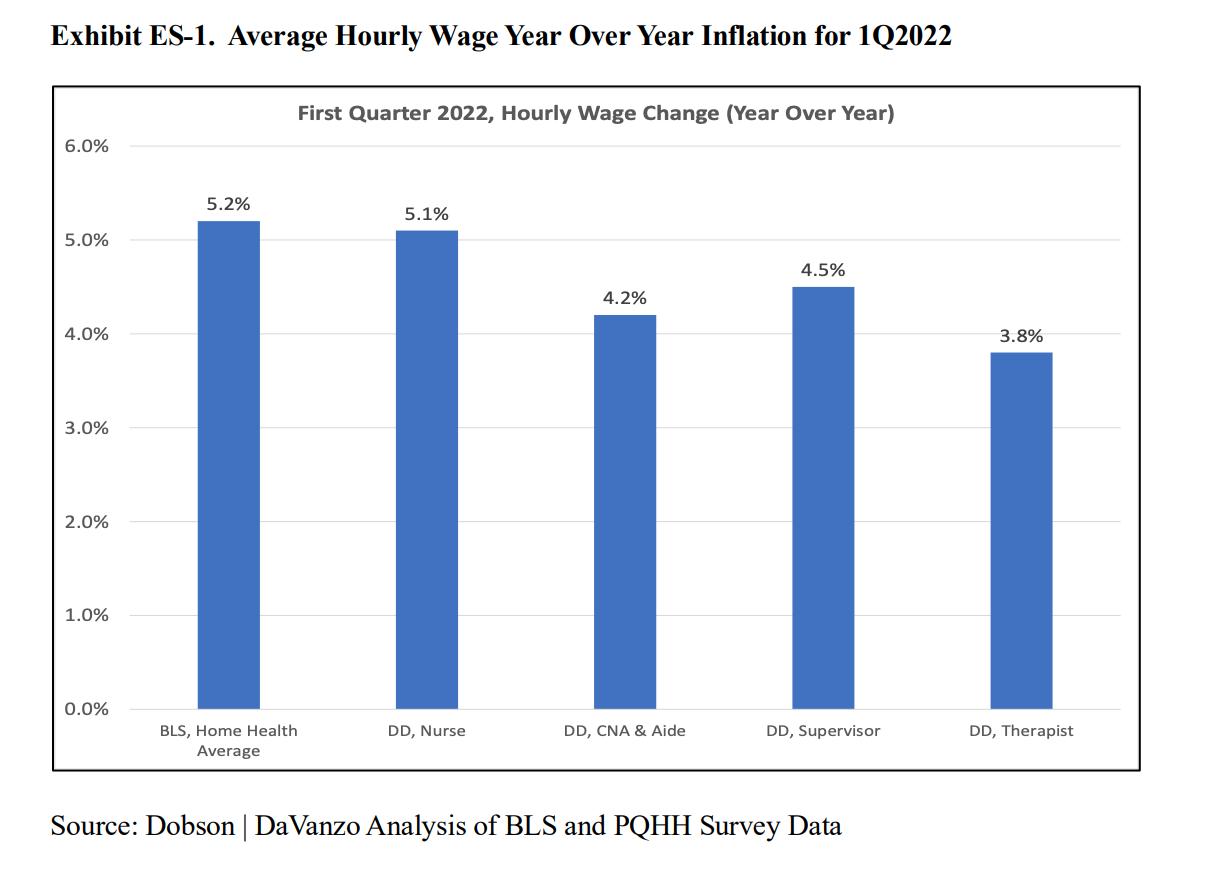
As Labor Competition Heats Up In Health Care, Home Health Sector Left Behind
Home health providers are dealing with a number of headwinds — inflation-induced financial challenges, labor shortages, pandemic pressures and more — that will only worsen if the proposed payment adjustments for 2023 become finalized.
That’s the major takeaway from a recent labor cost study from the Partnership for Quality Home Healthcare (PQHH). The study was conducted by Dobson DaVanzo & Associates and examines the changes in the home health labor costs. The study is based on the survey responses of six PQHH member organizations, and interviews from five industry leaders.
“Health care workforce challenges are not stabilizing, they are intensifying [in regards to] how organizations are experiencing recruitment and retention, wage pressures, benefit incentives, and just trying to manage staffing in this environment right now,” Joanne Cunningham, CEO of PQHH, told Home Health Care News.
Overall, staffing remains a major pain point for providers. On average, only 59% of positions at home health agencies were filled in Q1 2022. Some of the factors contributing to this was burnout, vaccine mandates and COVID-19 risks.
The competition for available and qualified talent between health care sectors also continues to escalate, at a time when home health providers are having trouble keeping up.
What’s more, wages for hospital employees are rising at pace faster than that of the home health workforce. This indicates that providers will need to raise compensation for clinical staff in order to attract talent.

“There’s always been competition among the different health care sectors, but that is also intensifying,” Cunningham said. “If you think about it, that means that the overall health care workforce is getting tighter.”

In addition to rising wages, home health providers want to be able offer incentives like signing bonuses, performance bonuses, tuition assistance and student loan payments.
Staffing shortages — and a generally smaller talent pool — have had consequences for home health business.
Specifically, providers were forced to turn down referrals because of the inability to hire clinicians. About 71% of survey respondents said that this impacted the amount of care services their organization was able to provide.
“Here’s the thing about that dynamic of home health providers turning away referrals — that not only impacts them from a business standpoint, it impacts the entire health care sector and the whole Medicare population,” Cunningham said. “The demand for home health is on the rise, that’s a reality. If providers cannot — because of staffing and other economic pressures — take referrals, it means patients are not moving out of hospital quickly and getting services they need.”
On top of the realities that providers are currently facing, they are additionally hindered by the Centers for Medicare & Medicaid Services’ (CMS) proposed payment rates, as well as regulatory constraints.
“These rates being proposed for next year has placed sizable stress on the sector,” Cunningham said. “At a time when there’s such a demand and clear preference for the ability to receive clinically advanced care in the home, it’s not the time to add the unnecessary pressure of massive cuts to the sector, especially when they’re facing challenges with workforce.”